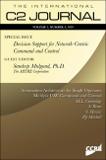Automation Architecture for Single Operator, Multiple UAV Command and Control,
Author(s)
Cummings, M. L.; Bruni, S.; Mercier, S.; Mitchell, P. J.
DownloadCummingsBruni.pdf (412.4Kb)
Metadata
Show full item recordAbstract
In light of the Office of the Secretary Defense’s Roadmap for unmanned aircraft systems (UASs), there is a critical need for research examining human interaction with heterogeneous unmanned vehicles. The OSD Roadmap clearly delineates the need to investigate the “appropriate conditions and requirements under which a single pilot would be allowed to control multiple airborne UA (unmanned aircraft) simultaneously.” Toward this
end, in this paper, we provide a meta-analysis of research studies across unmanned aerial and ground vehicle domains that investigated single operator control of multiple vehicles. As a result, a hierarchical control model for single operator control of multiple unmanned vehicles (UV) is proposed that demonstrates those requirements that will need to be met for operator cognitive support of multiple UV control, with an emphasis on the introduction
of higher levels of autonomy. The challenge in achieving effective management of multiple UV systems in the future is not only to determine whether automation can be used to improve human and system performance, but how and to what degree across hierarchical control loops, as well as determining the types of decision support that will be needed by operators given the high-workload environment. We address when and how increasing levels of automation should be incorporated in multiple UV systems and discuss the impact on not only human performance, but more
importantly, on system performance.
Date issued
2007Publisher
The International Command and Control Journal
Citation
Cummings, M.L., Bruni, S., Mercier, S., & Mitchell P.J. Automation Architecture for Single Operator, Multiple UAV Command and Control, The International Command and Control Journal, Vol. 1(2), 2007.
Keywords
multiple unmanned aerial vehicles, supervisory control, operator capacity